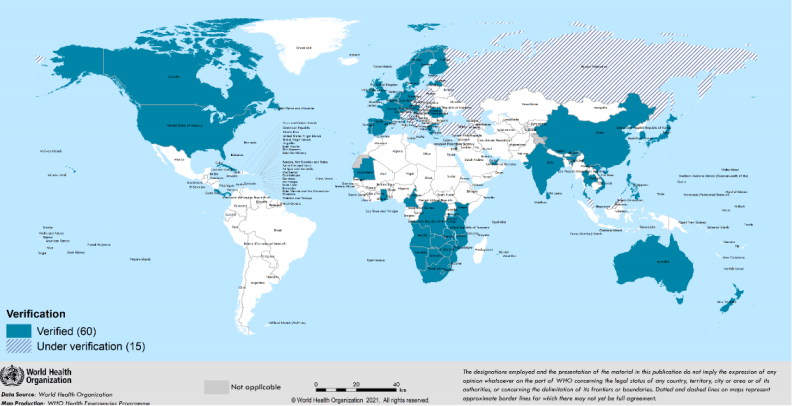Zimbabwe’s COVID-19 infections started rising again towards the end of 2020 after slowing down in September and October, peaking in a deadly January.
The rise in infections has been attributed to the emergence of new, more transmissible and virulent coronavirus strains such as the one first identified in South Africa towards the end of last year.
At least three studies have shown the variant first reported in South Africa to be now dominant in Zimbabwe as well.
Two other variants have been identified in the country, according to a paper authored by a team of scientists and published by the Lancet Microbe journal on March 10, 2021.The research did not find any cases of the variants first identified in the United Kingdom or Brazil.
Notably, the Lancet article concludes that “variants with concerning mutations have all replaced previously identified lineages in Zimbabwe.”
Here is a summary of the new coronavirus variants detected in Zimbabwe:
The B.1.351 or 501Y.V2 variant first identified in South Africa:
On February 16, 2021, Cabinet announced that results of genomic sequencing had shown that this coronavirus strain, first detected in South Africa, now accounted for 61% of COVID-19 cases in Zimbabwe. Cabinet did not say when this genomic sequencing was done.
The March 10, 2021 Lancet Microbe journal article authored by a team of Zimbabwean, British and World Health Organisation researchers said genomic sequencing conducted in December 2020 and January 2021 had identified the variant in 74 (69%) of 107 sequenced cases in December, 2020, and 99 (95%) of 104 sequenced cases in January, 2021.

The A.23.1 variant first reported in Uganda:
Research published on the medRxiv server on February 8, 2021 reports the emergence of the A.23.1 variant in Kampala, almost exclusively among cross-border truck drivers.
This variant was also detected in a small number of samples sequenced in Zimbabwe in December 2020, but did not show up in the January samples.
“The A.23.1 variant of concern, first reported in Uganda,1 was observed in 3 (3%) of 107 sequenced cases in December, but was not observed in 104 sequenced cases in January,” researchers said.
C.2, a variant similar to another found in Danish mink:
Last year, the WHO reported the existence of a coronavirus variant associated with mink farming in Denmark. The variant is referred to as “Cluster 5” or C.5.
By November 2020, five other countries – the Netherlands, Spain, Sweden, Italy and the United States of America had reported SARS-CoV-2 in farmed minks.
Researchers working on Zimbabwean genomic samples between December 2020 and January 2021 identified a variant, which they designated “C.2”, which contains a spike protein mutation (N501T) that was previously reported in the Danish lineage of SARS-CoV-2 found in mink.
“In December, 2020, 18 (15%) of 117 of cases were found to be of the C.2 variant, whereas in January, 2021, this number fell to 3 (3%) of 104,” the researchers said.
“Phylogenetic analysis of international genomes of the C.2 variant indicated that they were interspersed with C.2 genomes from Zimbabwean cases, indicating that Zimbabwe was a possible source.”
Do you want to use our content? Click Here












